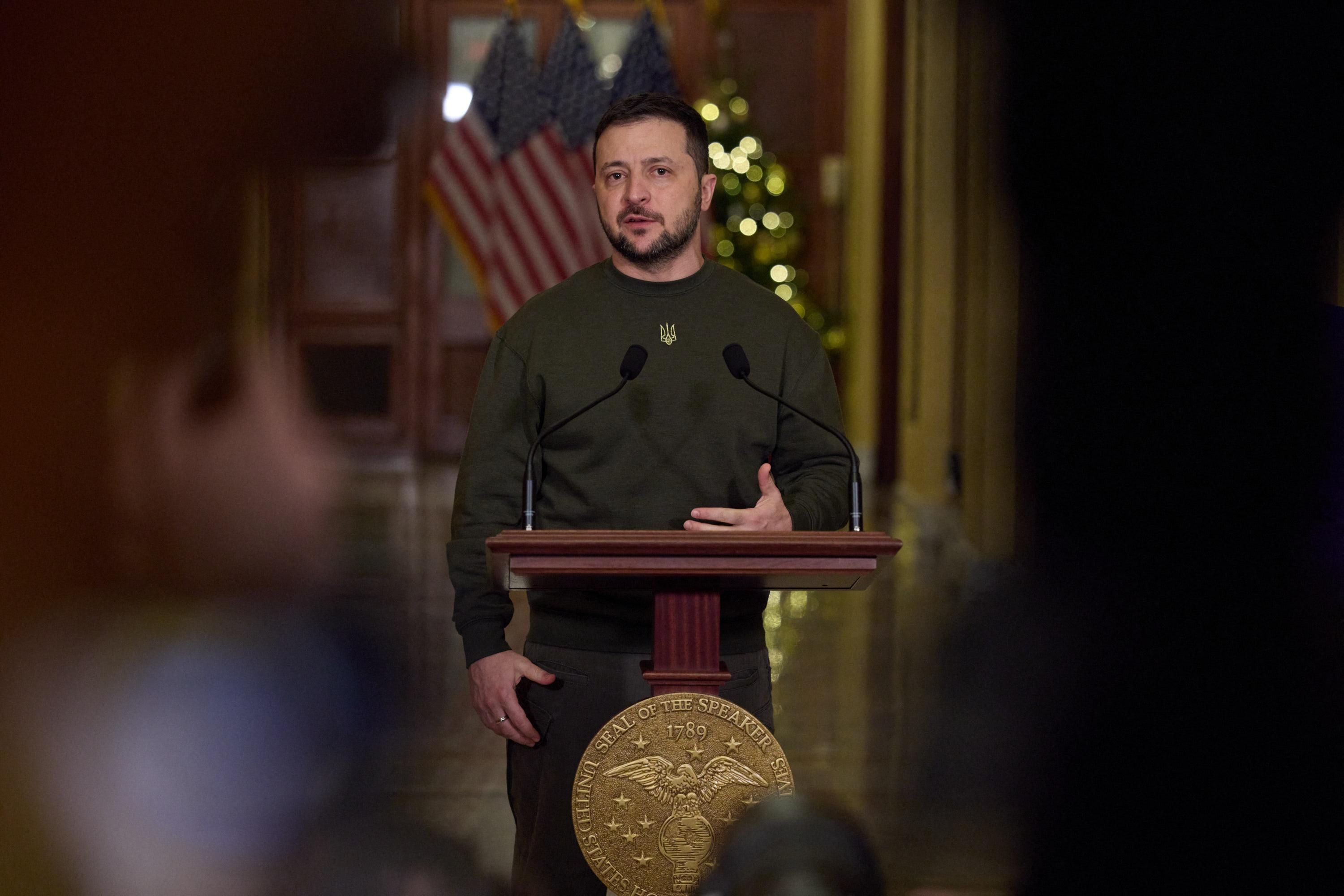In a historic address to a joint session of the US Congress on Wednesday, Ukrainian President Volodymyr Zelensky pleaded his case for why the US should continue greenlighting security aid to his country. So what’s Zelensky getting and what does he still want? The Biden administration announced this week that it was earmarking another $45 billion – part of a sprawling $1.7 trillion government spending bill that passed the Senate on Thursday and awaits a House vote – in military assistance to Ukraine. Half of the funds will go toward arming Ukraine’s army and replenishing US stockpiles. Crucially, an additional $1.85 billion package was announced on Wednesday that includes the Patriot air defense system that Kyiv has long been requesting to help protect its energy infrastructure from Russian bombardments.
Still, the White House has not delivered other items on Kyiv's “Christmas wishlist,” including US and German-made battle tanks. (Berlin says it is following Washington’s lead on this). When asked this week by a Ukrainian journalist why Washington doesn’t give Ukraine everything it needs, including “long-range missiles,” Biden gave a waffly answer about the “prospect of breaking up NATO and breaking up the European Union.” But the real reason is likely that the White House wants to keep its support for Ukraine incremental and see how the Kremlin might respond. For more on how Zelensky’s pitch is landing in Washington, Clayton Allen, director for the United States at Eurasia Group, shares his perspective in US Politics in 60 Seconds.More from GZERO Media
As the global economy faces uncertainty, Axel van Trotsenburg, Senior Managing Director of the World Bank, warns that “a wait-and-see attitude” is holding back investment and growth, especially in developing countries. Speaking with GZERO Media’s Tony Maciulis on the sidelines of the 2025 World Bank-IMF Annual Meetings, van Trotsenburg highlights human capital and infrastructure as key priorities, with a growing urgency to bridge both the digital and AI divides.
Household moves are down 20% from pre-pandemic levels. With many families locked into lower rates, housing supply is tight — especially in the Northeast and West. Unless affordability improves, migration may stay muted. Find out where moving trends are headed next from Bank of America Institute.
I get a lot of questions these days from people feeling worried, disturbed, even overwhelmed about the state of politics in the United States.
This Monday, live from Tokyo, Ian Bremmer delivers his annual ‘State of the World’ speech, sharing his takeaways on 2025’s biggest geopolitical shifts—and what’s coming next. Watch live at: https://www.gzeromedia.com/stateoftheworld
The 2025 Supreme Court term began this month, ushering in a slate of cases that could reshape American governance. No one will be watching more closely than President Donald Trump, whose efforts to expand executive power and limit independent oversight will be under the judicial microscope.
Hard Numbers: Kenya’s long-time opposition leader dies, World Bank doubles down on agriculture, US revokes visas of Charlie Kirk critics, & more
When Walmart stocks its shelves with homegrown products like Fischer & Wieser’s peach jam, it’s not just selling food — it’s creating opportunity. Over two-thirds of what Walmart buys is made, grown, or assembled in America, fueling jobs and growth in communities nationwide. Walmart’s $350 billion commitment to US manufacturing is supporting 750,000 jobs and empowering small businesses to sell more, hire more, and strengthen their hometowns. From farms to shelves, Walmart’s investment keeps local businesses thriving. Learn how Walmart's commitment to US manufacturing is supporting 750K American jobs.
Earlier this month, Microsoft released the 2025 TechSpark Impact Report, which highlights how the company is assisting regions across the US in achieving these goals. Since its launch, TechSpark has obtained over $700 million in community funding, supported more than 65,000 people in developing digital skills, and, thanks to the work of TechSpark Fellows, catalyzed $249M+ in funding and upskilled 34,600 individuals across 46 communities — highlighting the ripple effect of local leadership and innovation. Learn more about this progress in the 2025 report here.
GZERO spoke to Eurasia Group’s Commodities Director Tim Puko to better understand why the diamond industry has tanked, and the consequences of this for geopolitics.
